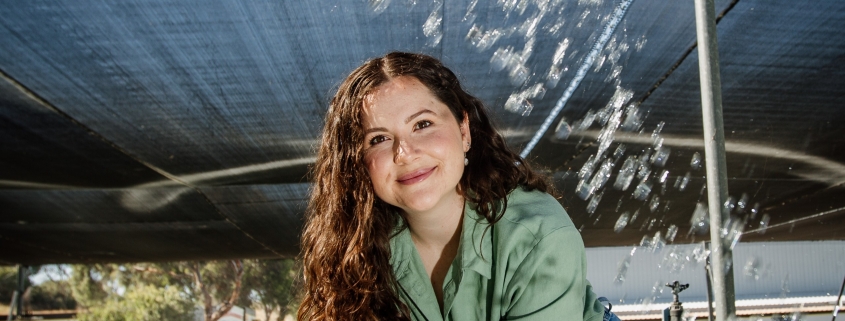Fly larvae offers hope for future food security
Insects could be part of the solution to future global food security pressures, according to an aquaculture researcher looking at black soldier flies as a potential fish feed source.
PhD candidate Isobel Sewell, from The University of Western Australia, told students in a Thinking Blue lecture there was growing pressure on wild stocks from overfishing.
This, combined with the world’s population forecast to exceed nine billion by 2050, meant there was an increased focus on aquaculture as a sustainable alternative.
Thinking Blue is WAMSI’s school outreach program which gives students in Years 11 and 12 a chance to hear from marine scientists doing innovative research. It also aims to inspire school leavers to study marine science.
“The main question is, where will we find enough food for another one billion people and we think black soldier flies and their larvae could help,” Isobel said.
“Aquaculture is the most rapidly growing food production sector globally and there’s a lot of research looking at the feed given to fish that are reared in tanks and sea pens.”
“I am running trials at UWA with barramundi and marron to see how experimental diets containing black soldier fly larvae compare to a more traditional aquaculture diet, which typically contains wild-caught fish as a protein source.”
“For black soldier fly larvae to be considered a suitable alternative protein source, we need to ensure fish growth is promoted whilst still maintaining fish well-being.”
“So far, we have found barramundi fed the insect-based food are growing successfully and tests on their biological parameters, such as blood health, are within healthy parameters,” Isobel said.
She said the principal behind the experiment was to try to find ways of ensuring aquaculture fitted into the black soldier fly circular economy model.
“The three principles of the circular economy are to design out waste and pollution, to keep products and materials in use and to regenerate natural systems.”
Isobel said the ingredients for traditional barramundi aquaculture fish food was about 40 per cent plant dry matter, 30 per cent land animals, 15 per cent marine animals, 7 per cent land animal oil, and 1 per cent marine animal oil.
“There has been research on using more protein-rich plants such as soybean, but results showed they had the potential to cause inflammation of the fishes’ digestive tract.”
She said fish was an important food source for humans and had significant health benefits and there were concerns about the world’s growing population being able to nutritionally sustain itself without putting more pressure on ocean or land resources.
“Food insecurity affects 820 million people around the world, which is the equivalent of the combined populations of Canada, the United States of America and the European Union,” Isobel said.
Isobel told the students she had improved her experience during her studies by volunteering on projects including looking at plastic abundance on Albany beaches, tagging turtles on Barrow Island as part of a project investigating light pollution and working on a coral nursery in the Seychelles.
Find a link to Isobel’s talk here.

